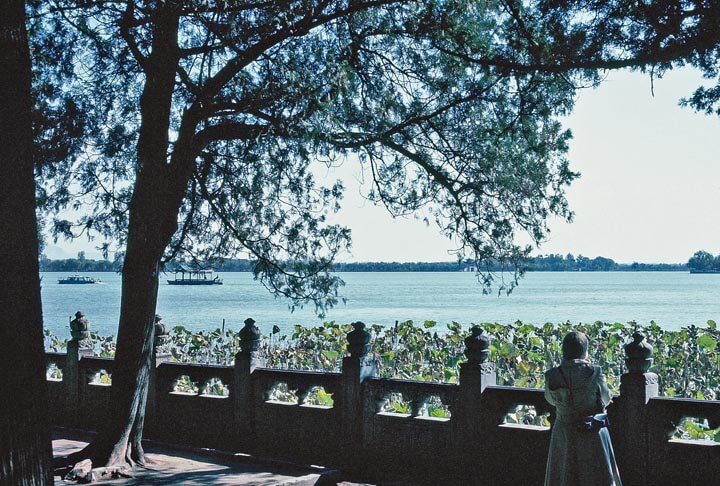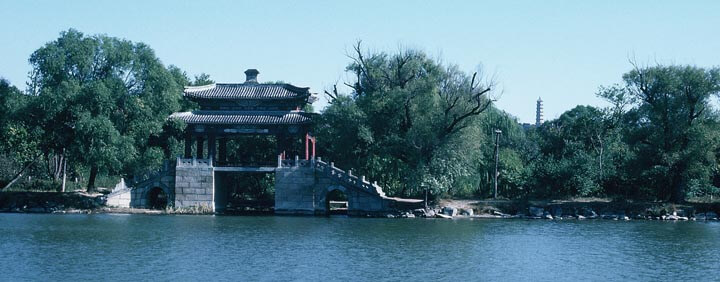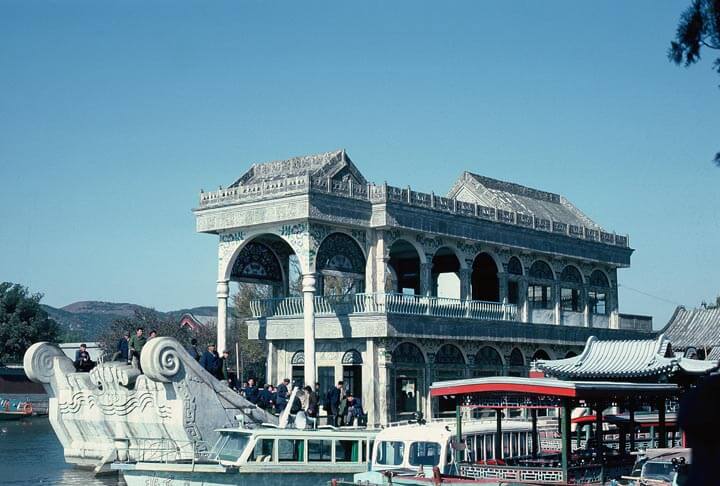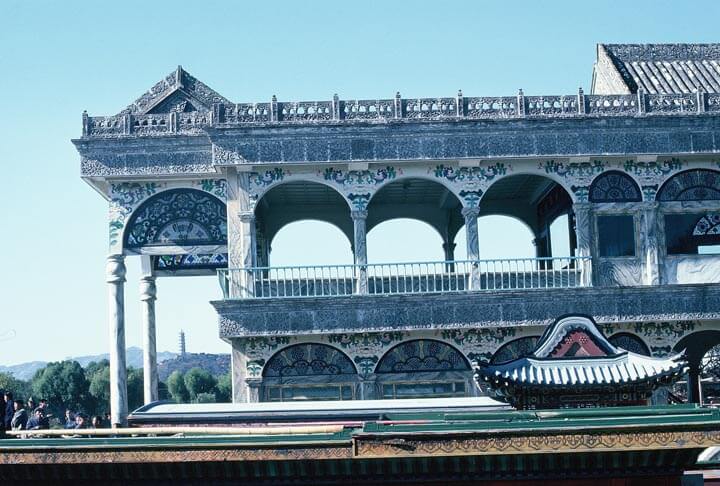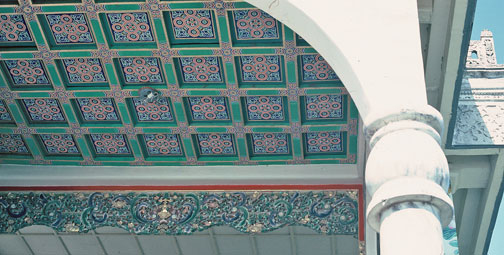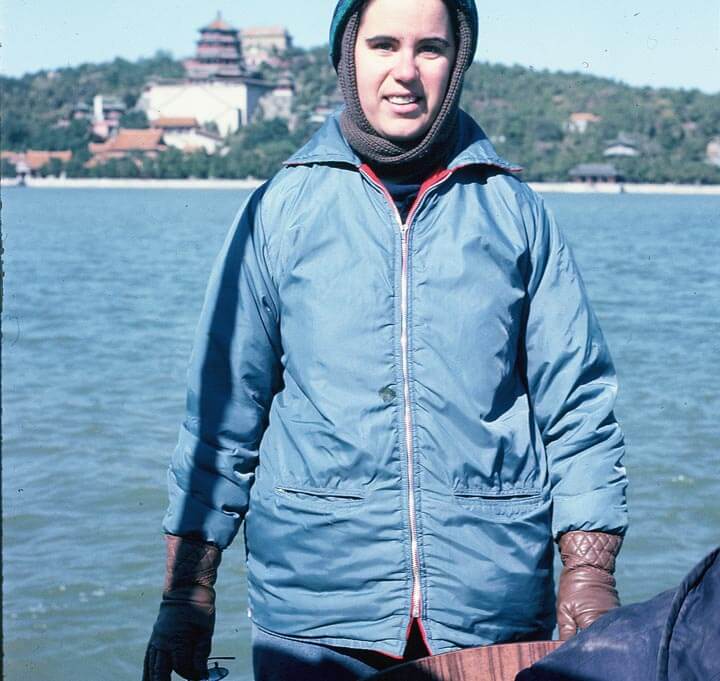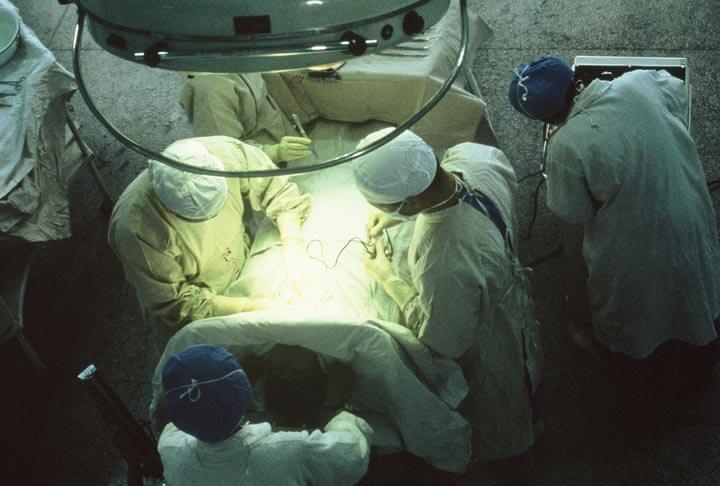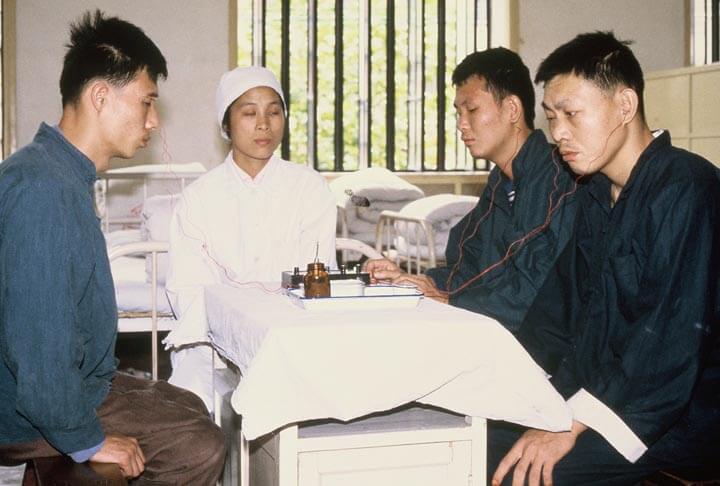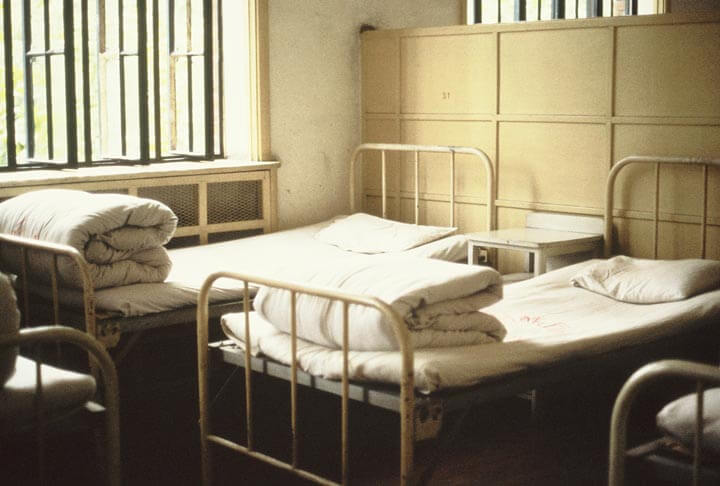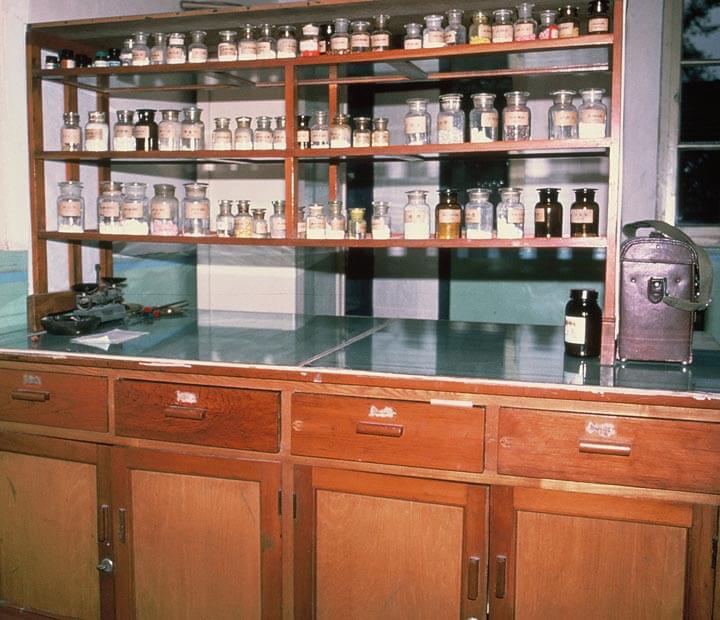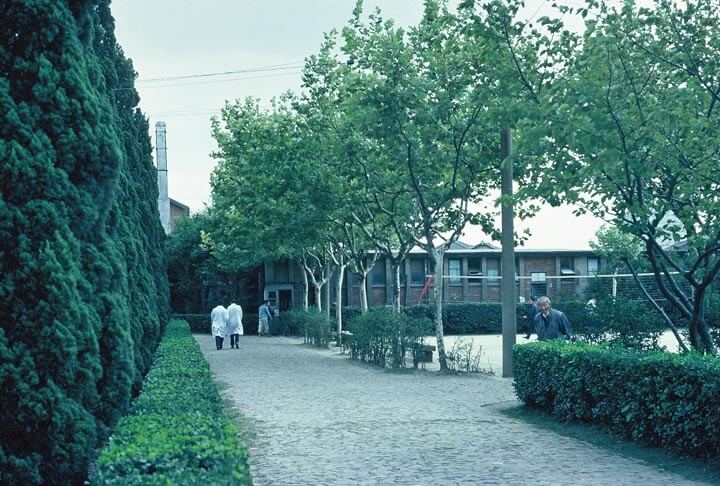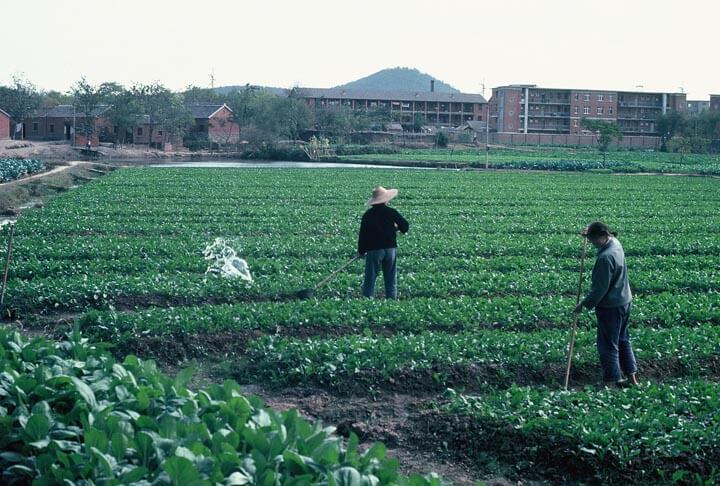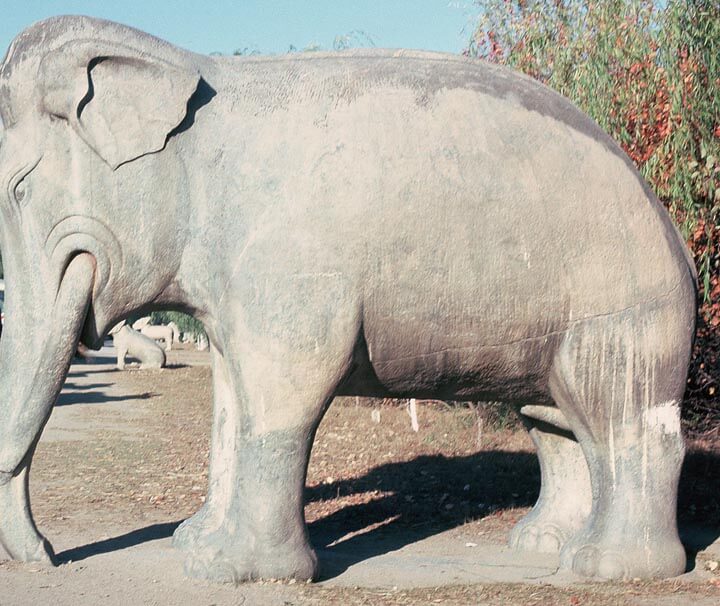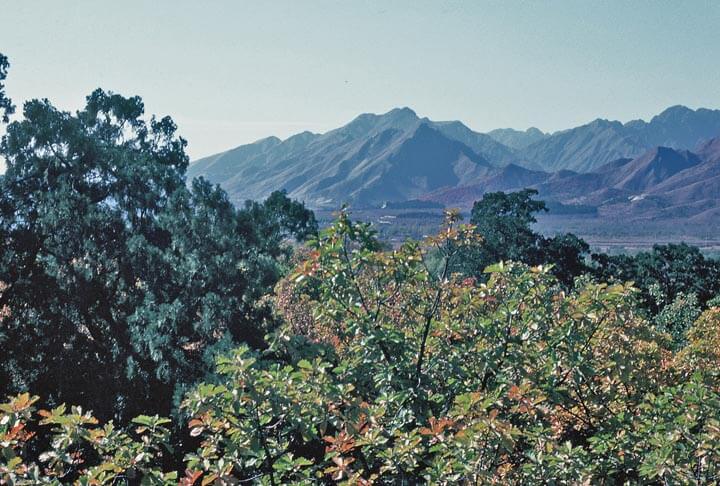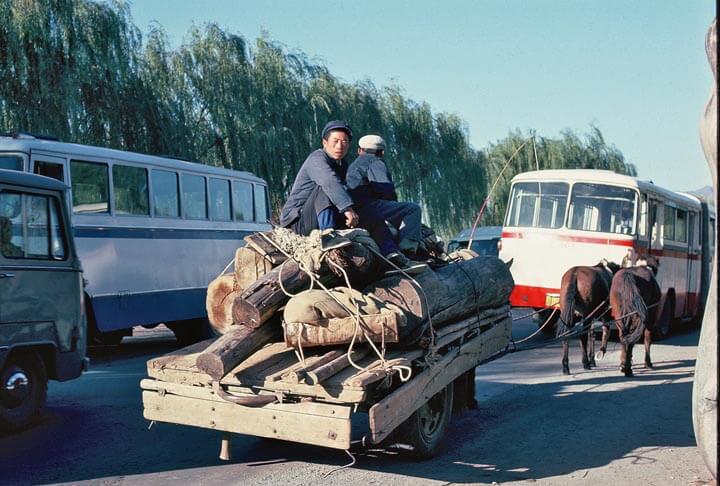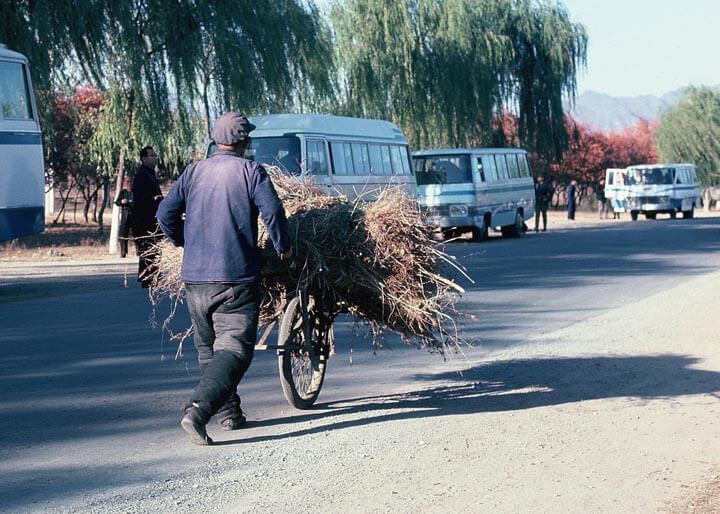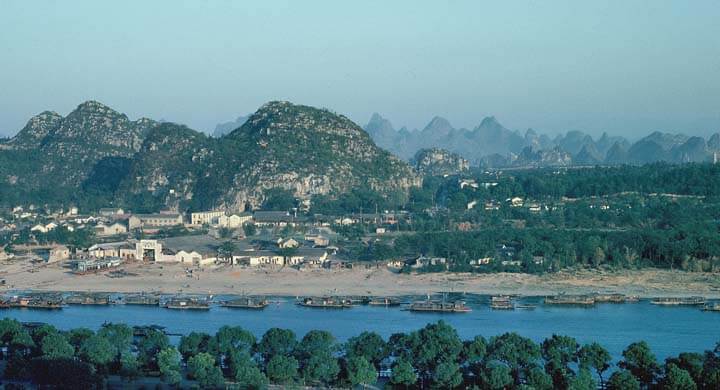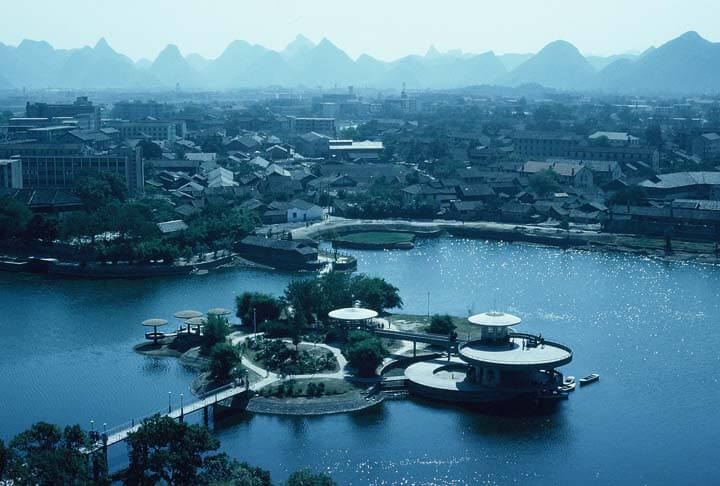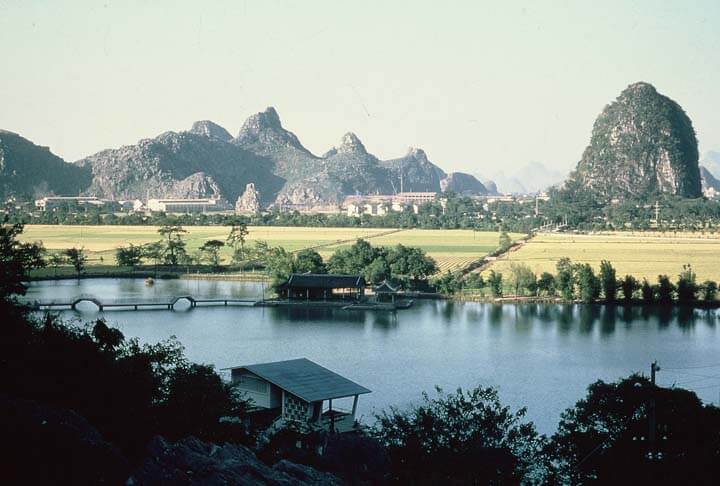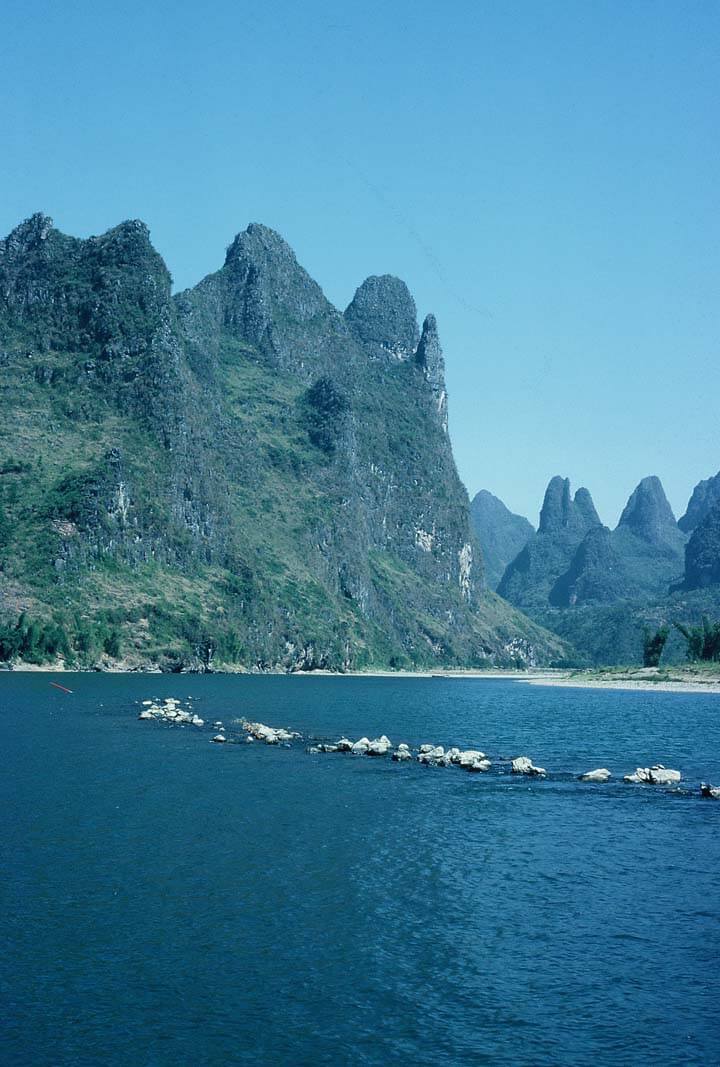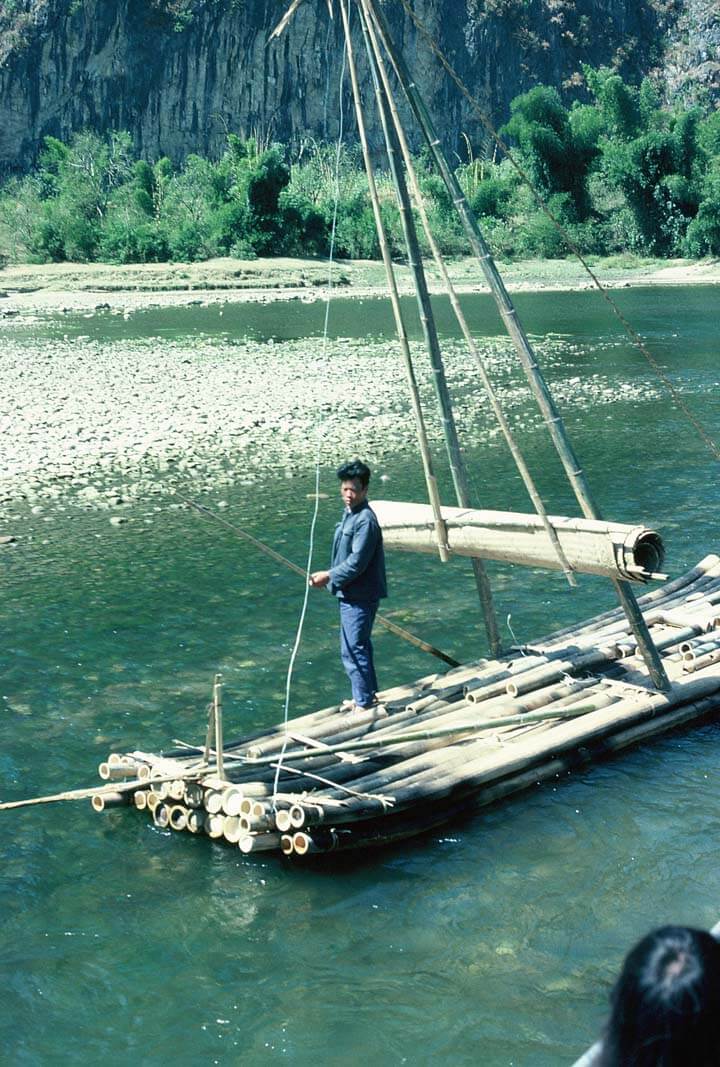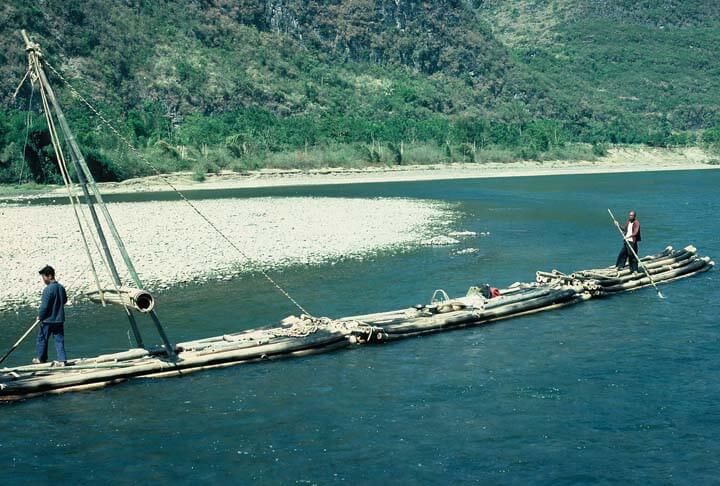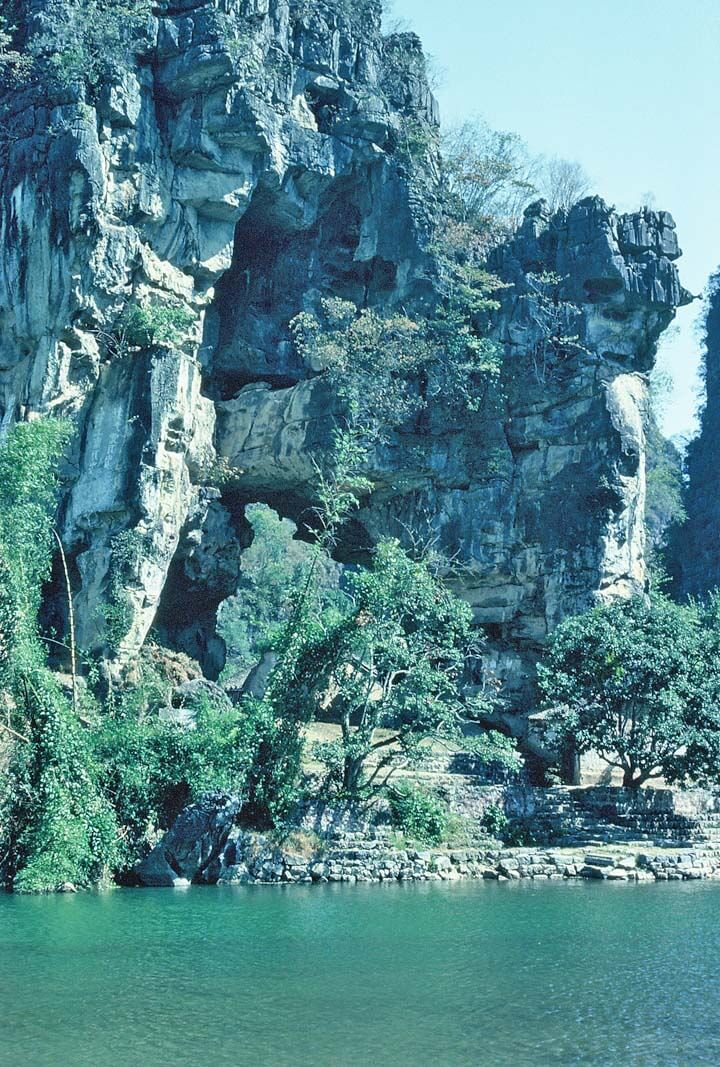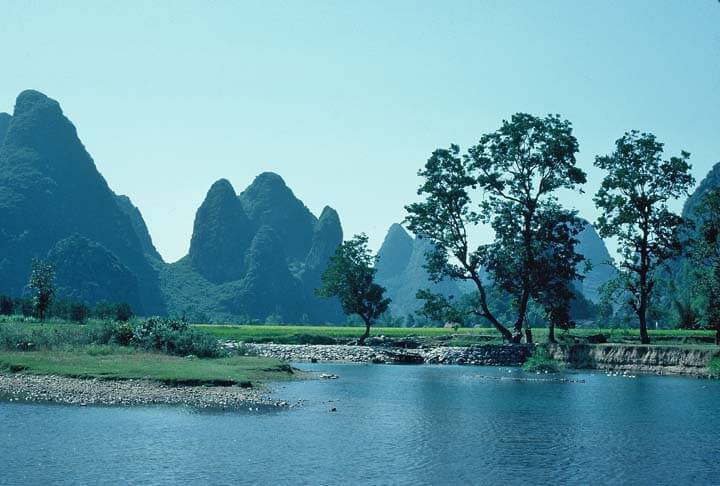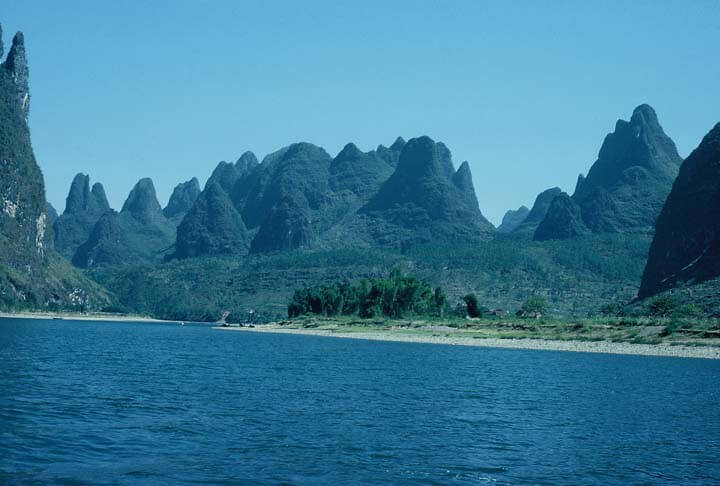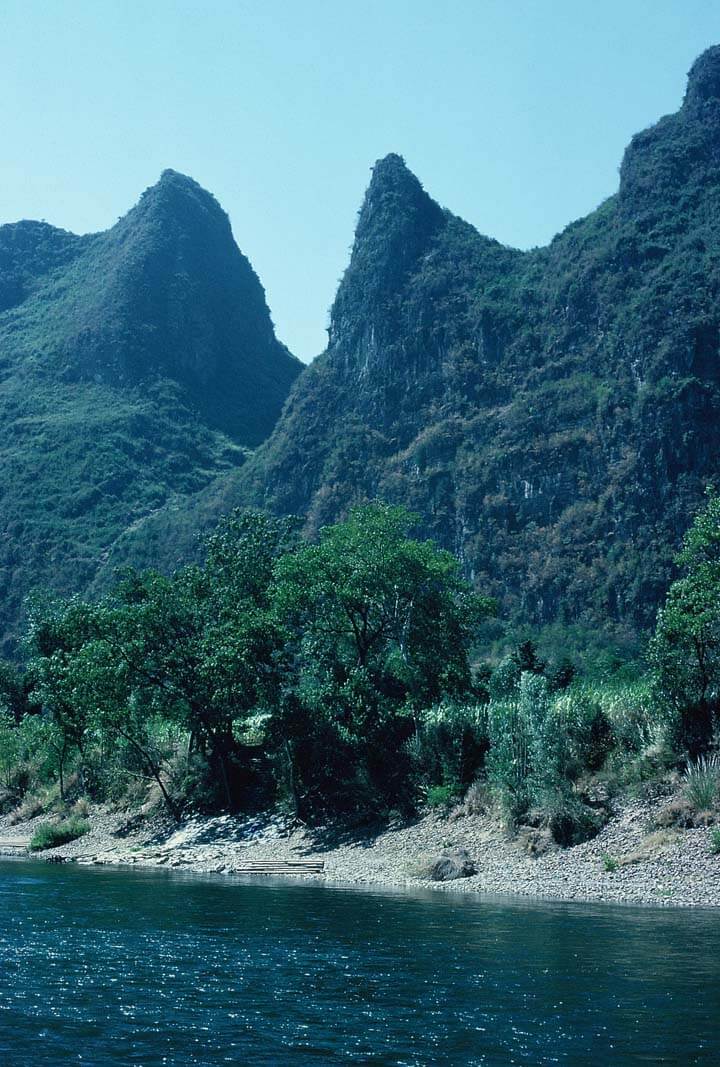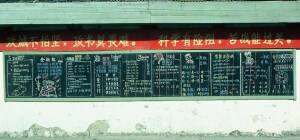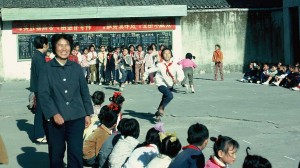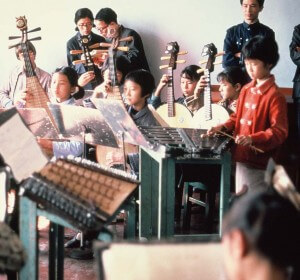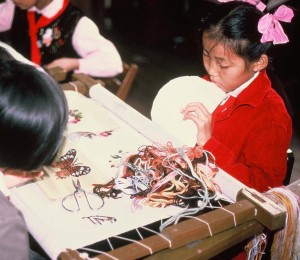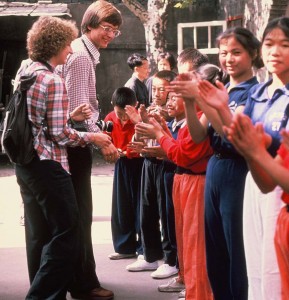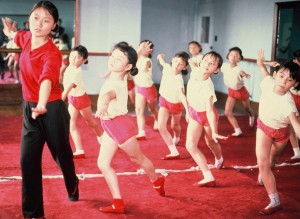Posts Tagged ‘China’
Some of My Favorites from China
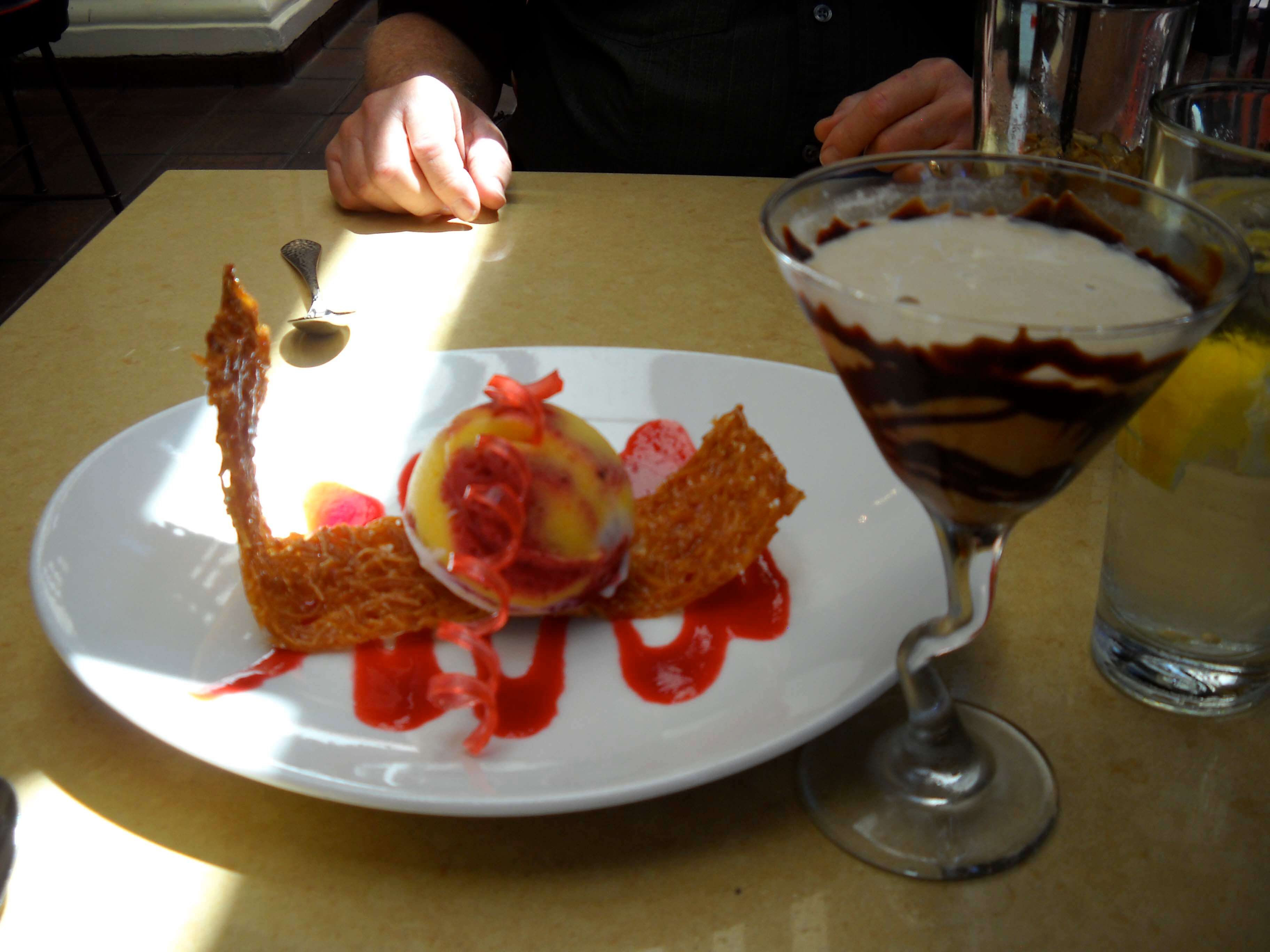 Ah, vacation! We are slowly starting to get some traveling in since I retired. We have plans for September – Santa Fe and Taos, October – Austin, and November back again to San Diego. There’s a wonderful restaurant at Balboa Park, Prado, with wonderful food and fabulous service. You’re looking at our dessert: a chocolate martini (OMG, amazing….) and mango/raspberry/lemon sorbet with carmelized coconut. Lunch was in between the stop at the Mingei and then the Botanical building.
Ah, vacation! We are slowly starting to get some traveling in since I retired. We have plans for September – Santa Fe and Taos, October – Austin, and November back again to San Diego. There’s a wonderful restaurant at Balboa Park, Prado, with wonderful food and fabulous service. You’re looking at our dessert: a chocolate martini (OMG, amazing….) and mango/raspberry/lemon sorbet with carmelized coconut. Lunch was in between the stop at the Mingei and then the Botanical building.
We are hoping for a long travel trip next spring to the Maritime provinces. But in the meantime we are busy making art and organizing ourselves. One of my projects, as readers of the blog know, is organizing my China slides. I’ve got some pictures that are kind of miscellaneous – they are of some very interesting moments or things that struck me in my early-30-first-time-oversees mind.
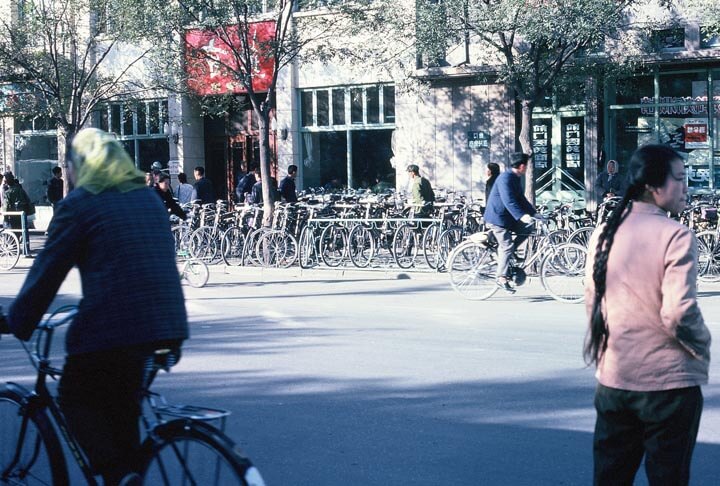 Bicycles – lots and lots of bicycles, the major form of transportation. I look at these shots and then compare them with China today, and you have nothing but cars.
Bicycles – lots and lots of bicycles, the major form of transportation. I look at these shots and then compare them with China today, and you have nothing but cars.
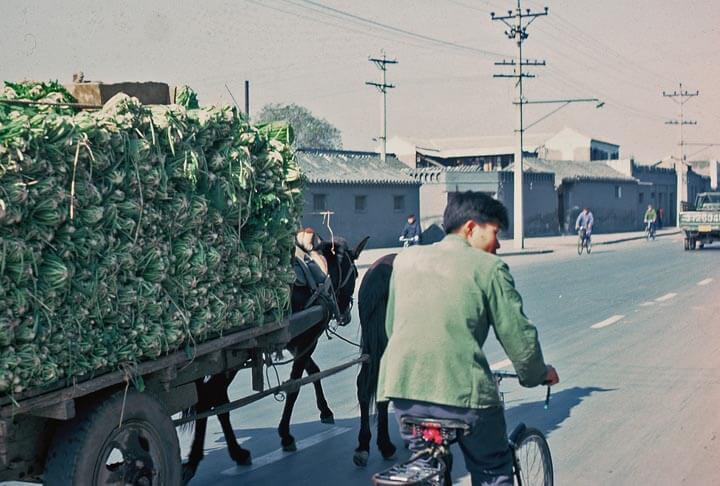 I should probably call these my transportation series. I took a lot of pics of people getting around – this was, 33 yeas ago, a third-world country.
I should probably call these my transportation series. I took a lot of pics of people getting around – this was, 33 yeas ago, a third-world country.
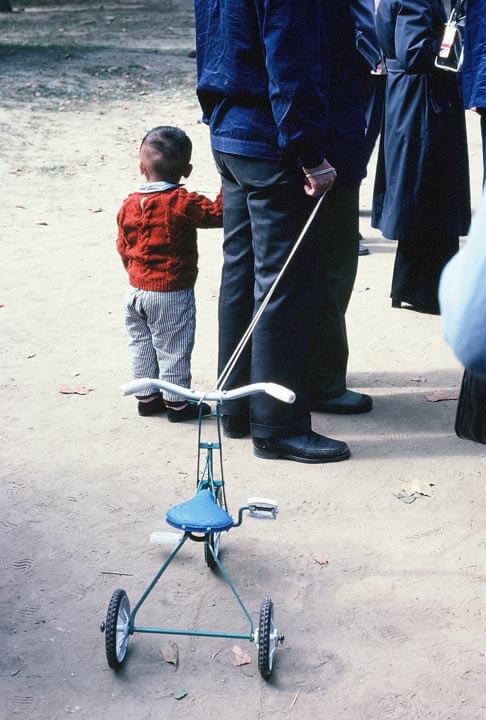 Some things never change across cultures. We just need “the basics.”
Some things never change across cultures. We just need “the basics.”
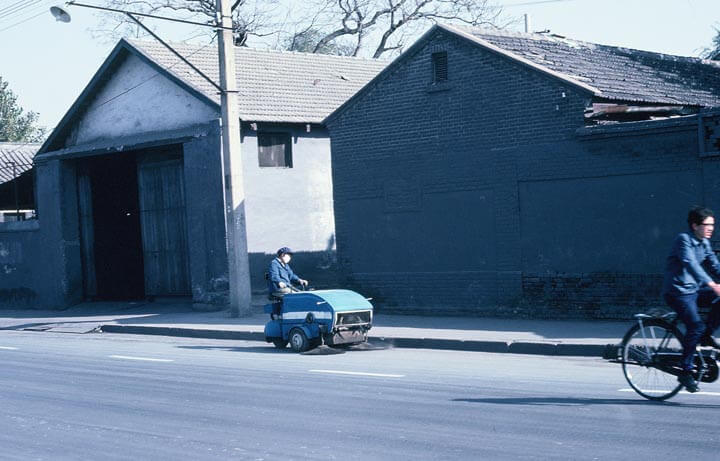 Thirty-three years ago the Chinese people were wearing masks for protection, something we have just begun to adapt.
Thirty-three years ago the Chinese people were wearing masks for protection, something we have just begun to adapt.
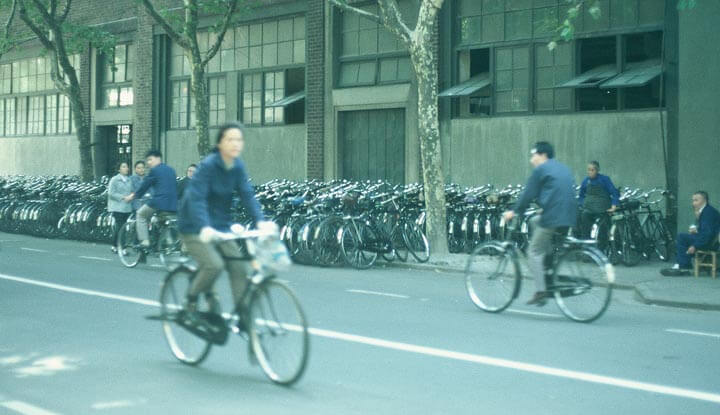 Lots more bicycles. I love the parking lots set aside for the bikes.
Lots more bicycles. I love the parking lots set aside for the bikes.
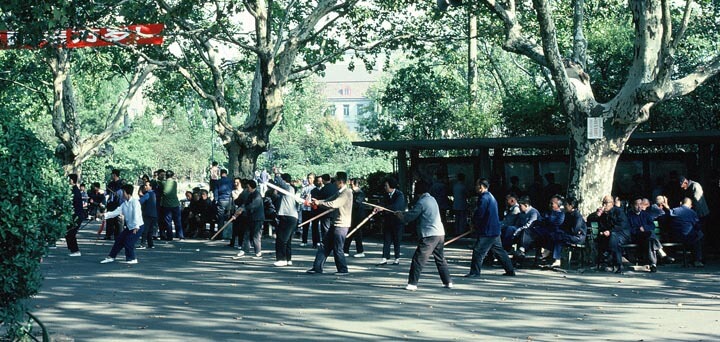 Every morning, regardless of where we went, people were out exercising.
Every morning, regardless of where we went, people were out exercising.
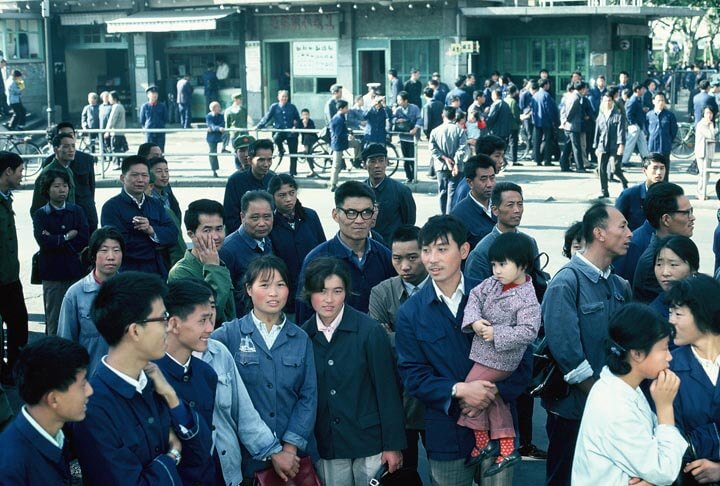 Everywhere we went we were objects of curiosity. These wonderful people had not ween Westerners in a number of years, due to the Cultural Revolution. We were advised to bring only clothes that were blues and grays. The only place we saw color was in the children. When we stopped over in Tokyo on our way home, I was assaulted by all the color – the first time I had experienced something like that. If you see pictures of modern China, clothes look very Western. To suddenly come back to a culture that used – and celebrated – color was quite the change!
Everywhere we went we were objects of curiosity. These wonderful people had not ween Westerners in a number of years, due to the Cultural Revolution. We were advised to bring only clothes that were blues and grays. The only place we saw color was in the children. When we stopped over in Tokyo on our way home, I was assaulted by all the color – the first time I had experienced something like that. If you see pictures of modern China, clothes look very Western. To suddenly come back to a culture that used – and celebrated – color was quite the change!
An absolutely amazing trip, even 33 years later. I watched “The Red Violin: a couple of weeks ago, and one of the stages for the violin was during the Cultural Revolution. Having seen the pictures and video from the time, and having talked to people who went “to the countryside,” the movie was a stab in the gut, to see it portrayed so realistically.
To someone who had never traveled overseas, it was the trip of a life time.
The Summer Palace in China
 What a busy weekend, and we’re headed out tomorrow to visit family in Prescott. Marbling went very well – working in the remodeled studio has been great. Room for all the projects…sort of. we ended up buying another set of cubbies from Target, just 6 this time, because we don’t have any empty space to move things “out of the way.” Like when we need a clear cutting table….and I started another Quilt University class, which has me spread out on the cutting table, so NOTHING fits.
What a busy weekend, and we’re headed out tomorrow to visit family in Prescott. Marbling went very well – working in the remodeled studio has been great. Room for all the projects…sort of. we ended up buying another set of cubbies from Target, just 6 this time, because we don’t have any empty space to move things “out of the way.” Like when we need a clear cutting table….and I started another Quilt University class, which has me spread out on the cutting table, so NOTHING fits.
Came across the cd’s I had done about a month ago for some of the China slides and realized I never put them up on line. Herewith pictures of the Summer Palace, created by one of the empresses as a “get-away,” complete with marble boat….
 This was a beautiful morning in late October, but we did need to bundle up. The view of the lake was gorgeous, but the entrance with all the arches was spectacular.
This was a beautiful morning in late October, but we did need to bundle up. The view of the lake was gorgeous, but the entrance with all the arches was spectacular.
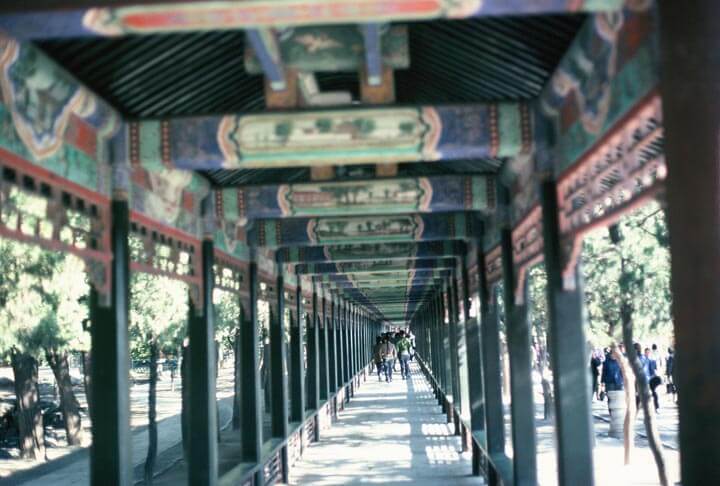 Oh, the painting and details! If I were to go back, I would take so many more – and different – pictures!
Oh, the painting and details! If I were to go back, I would take so many more – and different – pictures!
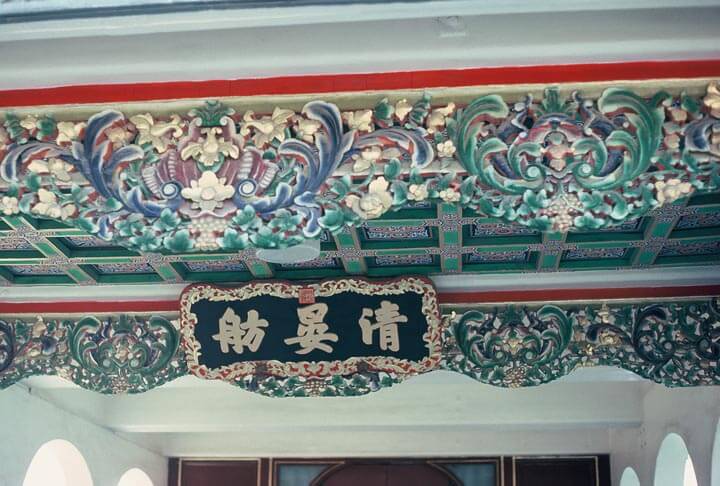 And then came the marble boat….
And then came the marble boat….
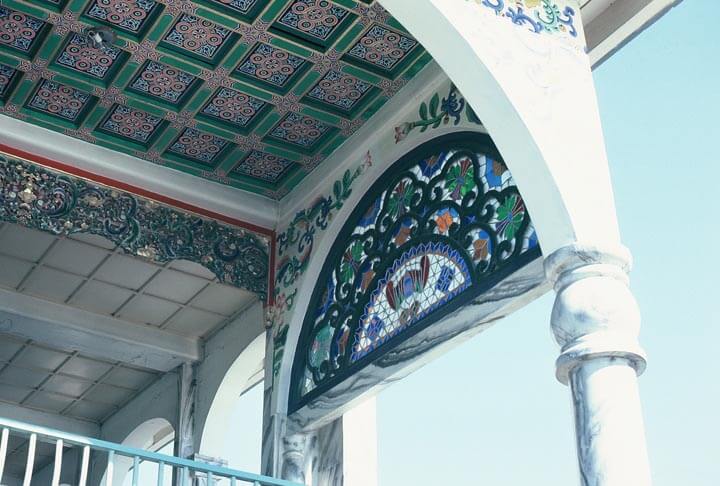 Oh, I would have taken more details and close-ups -this is just a HINT!
Oh, I would have taken more details and close-ups -this is just a HINT!
Yup, It was cold!
I love looking at these pictures, and my goal with the whole slide project is to have everything organized, and then create a few books to be able to look at easily. Plus, with the new class I am taking, I would like to take a coupe of the great photos and translate them into fabric. I can dream….
Past posts on China:
China Revisited
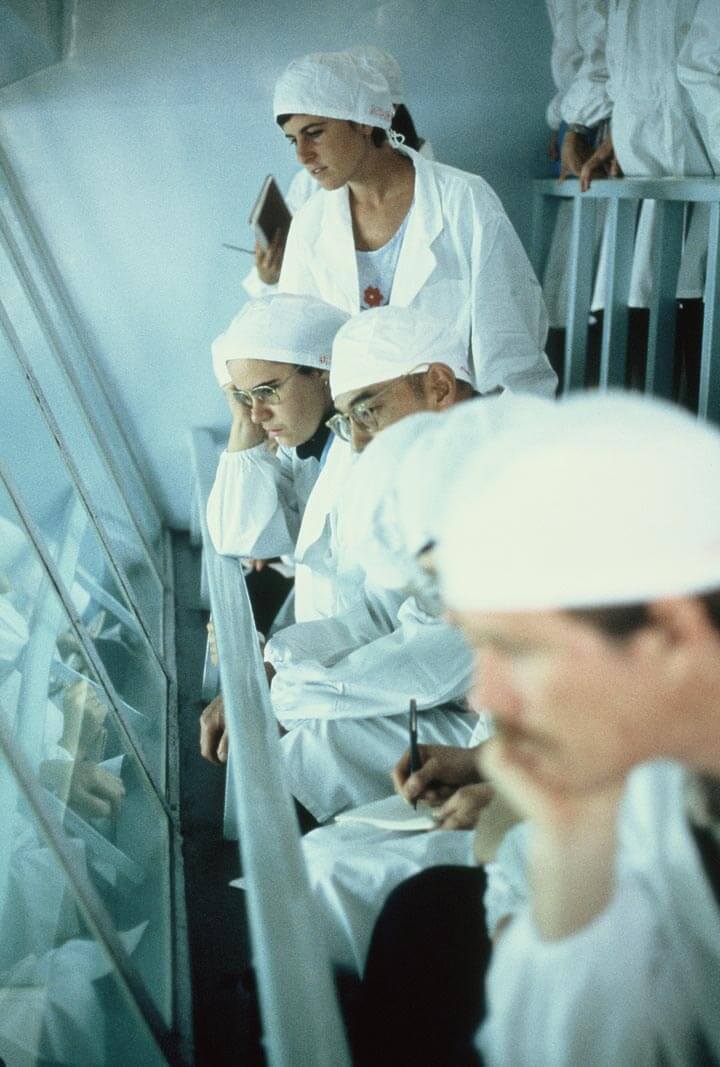 It’ll be 33 years this October that I went to China, and from all the pictures I see of modern China, I don’t think I would recognize some of the places. So many of the pictures I have are very special to me, especially for the time period. This one to the left is of one really interesting morning spent at a hospital in Beijing. I’m the one whose elbow is on the railing.
It’ll be 33 years this October that I went to China, and from all the pictures I see of modern China, I don’t think I would recognize some of the places. So many of the pictures I have are very special to me, especially for the time period. This one to the left is of one really interesting morning spent at a hospital in Beijing. I’m the one whose elbow is on the railing.
Many years ago I had thyroid surgery and have the neck scar to prove it. That’s the exact surgery I am watching in this hospital. The female patient came in fully dressed, bowed to us and the doctors, and lay down on the operating table. She was awake the complete operation, the only anesthesia coming from acupuncture. Needless to say, I was absolutely fascinated. When the surgery was done, she got up from the table, bowed to the doctors and us again, and went off to her room to recuperate. We were all pretty stunned.
From there we toured the rest of the hospital, which looked extremely primitive to all of us, familiar as we all were with “western” medicine. I am fortunate to have a chiropractor who believes in alternative forms of medicine, especially acupuncture. We saw needles being used for anesthesia, treatment of mental disorders, electrical stimulation for some patients, among a few things. Doctors took the time to talk with us, as did patients. One of the members of our tour group (US-China People’s Friendship Association) spoke fluent Chinese, and she was able to fill us in on anything we felt we didn’t “get” from our interpreters. These five interpreters who traveled with us were wonderful and answered any questions we had, even political ones.
Here’s the operating room we were looking into, as well as the patient:
Now a visual tour of this hospital:
These patients were receiving electrical stimulation with acupuncture.
The hospital ward looks pretty primitive.
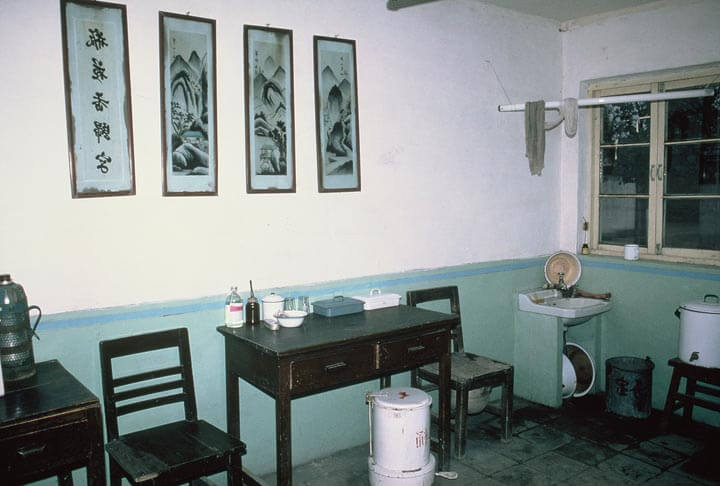 Basic patient consultation room
Basic patient consultation room
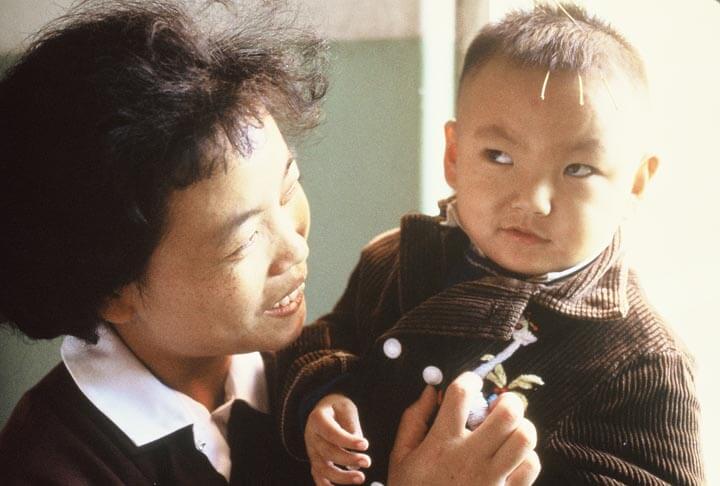 The needles really do not hurt! I’ve had it done many times, and the needles work – they let you know when they’re done working – until then, they will not come out easily.
The needles really do not hurt! I’ve had it done many times, and the needles work – they let you know when they’re done working – until then, they will not come out easily.
The pharmacy – and any places I visited dealing with medicines looked much like this – but with lots of little drawers. When I got medicine for cramps, the pharmacist went to a small drawer, took some herbs and ground them up, and gave our interpreter instructions for making the tea.
The hospital we visited – outpatient clinics, mental health wards, surgery centers.
I had brought along some Pepto-Bismol tablets, and at one point I showed them to one of the “barefoot doctors” – the term for local medical personnel after the fall of the Gang of Four, and I remember the puzzled looks on her face. She prescribed some shots, and our interpreter took the vials of medicine and found a medical person at each of our stops to help administer my shots. It was a pretty amazing trip.
And now, two of my most favorite shots, of farming in a third-world country.
We stopped on the return trip from a commune just to be able to walk around. I saw these women in the fields, and only when I looked closer, did I see how they were actually watering the fields – by hand, scoop by scoop, from a small canal running along the fields.
Truly one of my most memorable moments.
China – The Ming Tombs
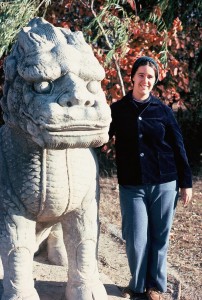 Ah, the part of me that is into cleaning and organizing is having a ball with undiscovered-in-years stuff! As part of my goal of getting all my slides to CD, this last bunch that went off are all of the area around the Ming Tombs outside of Beijing. I think we spent the morning at a museum and then took the bus ride to the tombs and had a packaged picnic lunch before touring the tombs. It was a glorious late October day, and autumn was in full color in the countryside. I actually have very few pictures of inside the tombs themselves, because, after all, they were tombs. I was taken with the stories and the countryside, so that’s what I focused on. The main story is that the tombs were discovered by accident by workers digging in the area. As you will be able to see from the pictures, this was a major tourist 30 years ago, and I’m sure it still is. The Clay Army hadn’t been discovered yet, which gives me another good reason to go back to China someday.
Ah, the part of me that is into cleaning and organizing is having a ball with undiscovered-in-years stuff! As part of my goal of getting all my slides to CD, this last bunch that went off are all of the area around the Ming Tombs outside of Beijing. I think we spent the morning at a museum and then took the bus ride to the tombs and had a packaged picnic lunch before touring the tombs. It was a glorious late October day, and autumn was in full color in the countryside. I actually have very few pictures of inside the tombs themselves, because, after all, they were tombs. I was taken with the stories and the countryside, so that’s what I focused on. The main story is that the tombs were discovered by accident by workers digging in the area. As you will be able to see from the pictures, this was a major tourist 30 years ago, and I’m sure it still is. The Clay Army hadn’t been discovered yet, which gives me another good reason to go back to China someday.
The statue I am standing by is one of many that lined the road to the tombs. These in themselves were gorgeous works of art. If I had been sketching at the time, I don’t think you would have gotten me away from them.
This next picture shows the line of statues – look under the elephant’s trunk. Keep in mind they lined both sides of the road.
Notice the similarity of drab colors, except among foreigners. The green in front is the Chinese Army visiting. This is the entrance to the tombs.
The gorgeous autumn countryside.
Again, old meets new.
The Amazing Guilin
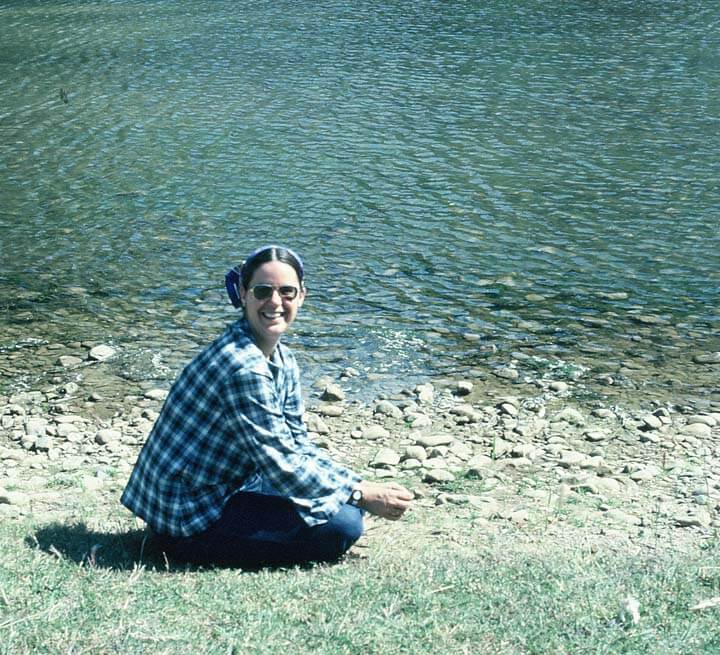 One of my projects that has been on hold these last couple of years has been making sense of all my slides and photos so I can look at them on a regular basis. I am slowly converting all of my slides to CDs, and I have started on all my China slides. There is another post here of other adventures in China. One of my goals is to print a couple of Apple books with my adventures, so I can look at pics very easily….no sorting through boxes and setting up the now ancient slide projector (which I tried to donate, and no one wants it….).
One of my projects that has been on hold these last couple of years has been making sense of all my slides and photos so I can look at them on a regular basis. I am slowly converting all of my slides to CDs, and I have started on all my China slides. There is another post here of other adventures in China. One of my goals is to print a couple of Apple books with my adventures, so I can look at pics very easily….no sorting through boxes and setting up the now ancient slide projector (which I tried to donate, and no one wants it….).
One of the most beautiful places I have ever been is Guilin, China. That’s me some 33 years ago sitting on the bank of a river that runs through Guilin. We all wore lots of dark blues and subdued colors during our month in China, as the Chinese frowned upon bright colors and dresses, anything that was “decadent” western. My trip to China coincided with the downfall of the Gang of Four, led by Mao’s wife, and the reopening of China to western influence.
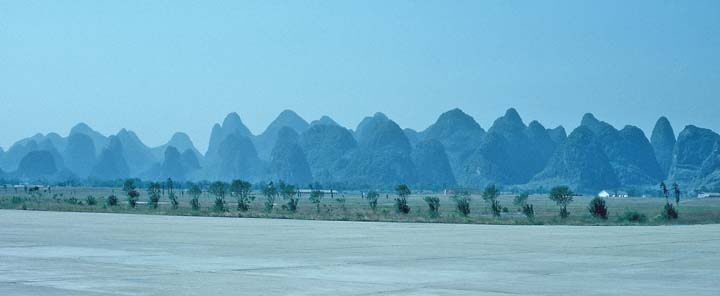 We flew into Guilin from Shanghai, and this was my introduction to the volcanic plugs in this part of China. I fell in love almost immediately, even with hearing combat fire in the distance, as China was at war with Vietnam – a little disconcerting.
We flew into Guilin from Shanghai, and this was my introduction to the volcanic plugs in this part of China. I fell in love almost immediately, even with hearing combat fire in the distance, as China was at war with Vietnam – a little disconcerting.
Guilin is on a river, and as you can see, the river was very low. This is one of the views from the top of our hotel. One thing about the hotels – no locks on the doors at all (some 30 years ago) until we got to Beijing, where the concern for theft was with the tourists.
Another view of the city from the hotel in the early morning. We were getting ready to leave on a boat trip down the Li River, so we were up early.
On the way to catch the river boat.
This was a nice relaxing trip through beautiful scenery. One of the guests with us was a leading opera singer, and we had the opportunity to ask questions about her life as a performer, expecially since the Cultural Revolution under Mao.
This is one of my favorite photos of this whole trip – another example of modes of transportation that get the job done.
There were all kinds of spiritual spots along the river, names now lost to me.
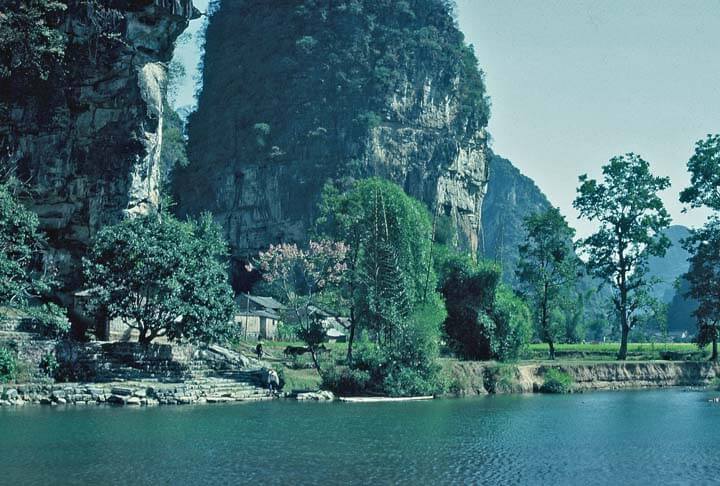
We had a lovely picnic waiting for us in this amazingly tranquil spot.
From here we were bused back to the hotel, as the river was too low for a trip back. Lots of fields and farming – countryside that didn’t look much different from the Midwest – except for those glorious mountains.
Revisiting China – Part 1
![]() One of my projects as a result of our recent move is to sort and organize slides and pictures: one because of the need for the extra space, two to eliminate anything that still has smoke from our fire 20-plus years ago, and three to find a way to enjoy all these memories. Now that I have a home for “recycling” slide mounts and boxes, I am ready for this project. Slides are sorted into a slide box we had been given years ago and never used; there’s one drawer of China slides and a second drawer of personal slides. I’m starting on the China slides.
One of my projects as a result of our recent move is to sort and organize slides and pictures: one because of the need for the extra space, two to eliminate anything that still has smoke from our fire 20-plus years ago, and three to find a way to enjoy all these memories. Now that I have a home for “recycling” slide mounts and boxes, I am ready for this project. Slides are sorted into a slide box we had been given years ago and never used; there’s one drawer of China slides and a second drawer of personal slides. I’m starting on the China slides.
How to organize? One of the most impressive memories from this trip in 1978 (before normalization of relations with the US) was the visits to the schools, so that’s where I am starting. Some background: I was teaching middle school science at the time in Phoenix, Arizona, when I became involved with the US-China People’s Friendship Association, a group working to bring about normalization (the recognition of “Red China”) as a legitimate country. This has been a passion of mine for years, since early high school, and especially influenced by a book by William Lederer (senior moment – lost the name) about the “truth” about Chiang Kai-Shek. I won a number of debates in high school based on the strenghts of my pro arguments, which didn’t make me any more popular. Oh well, I WAS right.
In 1978 I was selected as one of 20 people from the western part of the United States to travel for 3 weeks in China. I had never been anywhere, and China was at the top of my travel list. I was in heaven! I was gone for nearly a month, have a full notebook of interviews and impressions, and probably well over a thousand slides (all of which are being weeded down to the best. Each place we visited (fron Guangchou – the “old” Canton” to Beijing) we were able to meet and ask questions. I was in charge of all the school stops, since I was the only teacher in the group. It was the most amazing adventure.
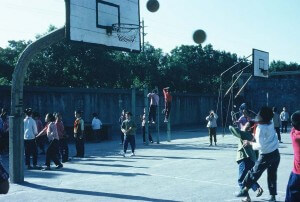 Our first visit was an elementary school, and the playground looked suspiciously like the typical US school ground. Teachers were wandering around, organizing activities, like tug of war. Notice the blues and grays for colors, especially on the adults. We were there at the end of the Cultural Revolution; the Gang of Four had just been imprisoned. Bright colors were a “western” problem, and we had been asked in doing our packing to look at basic browns, blues, and grays for colors, pants, no dresses, to respect the Chinese. We only saw bright colors on the children, until we hit Tokyo on our way back – our senses were literally assaulted with color.
Our first visit was an elementary school, and the playground looked suspiciously like the typical US school ground. Teachers were wandering around, organizing activities, like tug of war. Notice the blues and grays for colors, especially on the adults. We were there at the end of the Cultural Revolution; the Gang of Four had just been imprisoned. Bright colors were a “western” problem, and we had been asked in doing our packing to look at basic browns, blues, and grays for colors, pants, no dresses, to respect the Chinese. We only saw bright colors on the children, until we hit Tokyo on our way back – our senses were literally assaulted with color.
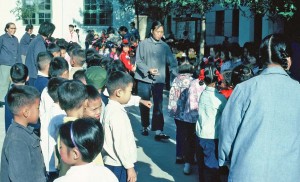 If you notice make-up on the children, it’s because many of them were going to be performing for us during our visit. We were treated to amazing displays of arts and athletics, and at the time China was not a player in sports on the world stage. We all know that has changed.
If you notice make-up on the children, it’s because many of them were going to be performing for us during our visit. We were treated to amazing displays of arts and athletics, and at the time China was not a player in sports on the world stage. We all know that has changed.
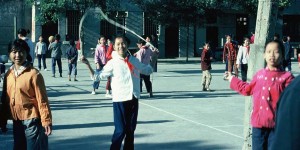 I was particularly taken by the blackboard at the end of the playground, with all the announcements. It was pristine; no damage, vandalism, or the like. One of the questions I asked at our first meeting with the teachers and administrators of the school was how they dealt with vandalism. I ws asked to rephrase the question, and then asked to define vandalism. The teachers looked at each other, not understanding the word…or the concept. The reply was “why would anyone want to destroy what they need?” Why indeed….
I was particularly taken by the blackboard at the end of the playground, with all the announcements. It was pristine; no damage, vandalism, or the like. One of the questions I asked at our first meeting with the teachers and administrators of the school was how they dealt with vandalism. I ws asked to rephrase the question, and then asked to define vandalism. The teachers looked at each other, not understanding the word…or the concept. The reply was “why would anyone want to destroy what they need?” Why indeed….
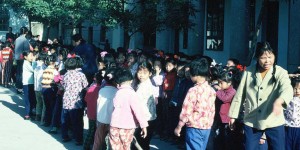 We saw all types of entertainment, from the little singers, singing songs of leading the good life according to Chairman Mao….
We saw all types of entertainment, from the little singers, singing songs of leading the good life according to Chairman Mao….
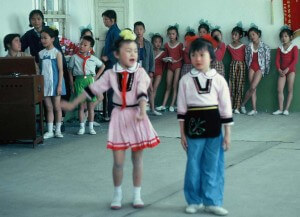 …to guymnastic displays of all ages. Look carefully at their equipment. Floors covered with skinny rugs, bare walls – nothing like we would expect for building athletes.
…to guymnastic displays of all ages. Look carefully at their equipment. Floors covered with skinny rugs, bare walls – nothing like we would expect for building athletes.
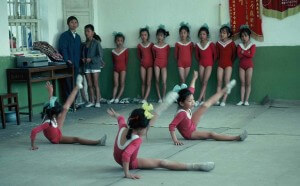 Some performances were more formal. This was a group of young ladies performing basic magic tricks for us, and they were very good. Stage presence was something I remarked upon at the time, and I still think it’s pretty amazing how poised they all were. I know how difficult it is to develop that in young children during theater.
Some performances were more formal. This was a group of young ladies performing basic magic tricks for us, and they were very good. Stage presence was something I remarked upon at the time, and I still think it’s pretty amazing how poised they all were. I know how difficult it is to develop that in young children during theater.
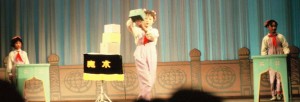 This dance/song number talked about importance of water and work to develop a good cotton crop.
This dance/song number talked about importance of water and work to develop a good cotton crop.
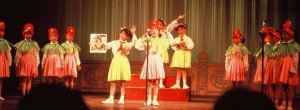 This is the classroom that sticks with me so many years later. Sixty students in the classroom, no textbooks in sight. If you look closely, you will see double-digit multiplication problems on the board. No paper visible among these second graders. Students would raise their hand with a solution they had worked out in their heads, be called upon, come to the front of the room, and respond. We don’t even begin teaching basic multiplication facts until third grade….
This is the classroom that sticks with me so many years later. Sixty students in the classroom, no textbooks in sight. If you look closely, you will see double-digit multiplication problems on the board. No paper visible among these second graders. Students would raise their hand with a solution they had worked out in their heads, be called upon, come to the front of the room, and respond. We don’t even begin teaching basic multiplication facts until third grade….
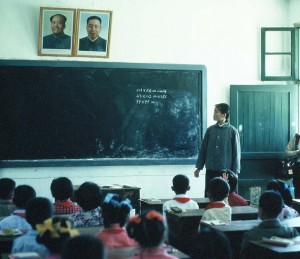 We had certificates made up of our trip before we left the United States. We brought along a Polaroid camera to take pictures of our hosts and the group, which would then be affixed to the certificate. This is still one of my prized possessions. (I’m second row on the left….)
We had certificates made up of our trip before we left the United States. We brought along a Polaroid camera to take pictures of our hosts and the group, which would then be affixed to the certificate. This is still one of my prized possessions. (I’m second row on the left….)
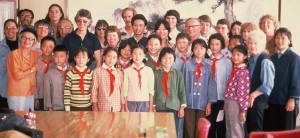 The children crowded around us to watch the picture develop – absolute magic!
The children crowded around us to watch the picture develop – absolute magic!
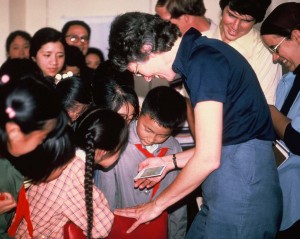 Shanghai, as well as most other cities, had what were called Children’s Palaces, a place for students to go after school for more activities. A good many of them were focused on the arts, but many others were practical. Here’s one of our group members playing – of all things – Chinese jump rope.
Shanghai, as well as most other cities, had what were called Children’s Palaces, a place for students to go after school for more activities. A good many of them were focused on the arts, but many others were practical. Here’s one of our group members playing – of all things – Chinese jump rope.
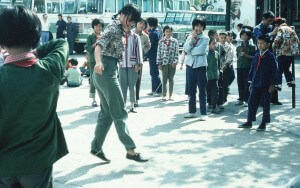 Lots of musical instruction, as well as impromptu concerts for us.
Lots of musical instruction, as well as impromptu concerts for us.
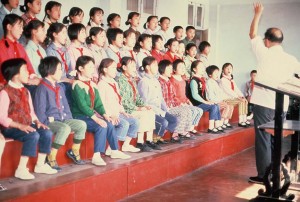 The needlearts are very strong in China at that time, especially needlepoint.
The needlearts are very strong in China at that time, especially needlepoint.
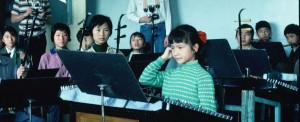 Lots of martial arts demonstrations….
Lots of martial arts demonstrations….
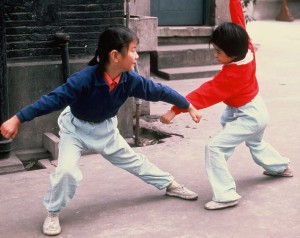 …and every where we went we were sent off to applause. For so many people we were the first Westerners they had ever seen.
…and every where we went we were sent off to applause. For so many people we were the first Westerners they had ever seen.
Ballet had been banned during the Cultural Revolution, so it was encouraging to see this, and then one evening a classical ballet performance.
This is going to be wonderful, retracing this amazing trip. I will be culling the best of the slides to put together in a photo book so that I can look at these images more often. I’ll post more as I proceed with this project…and a glimpse of a China just beginning to modernize and embrace capitalism.
